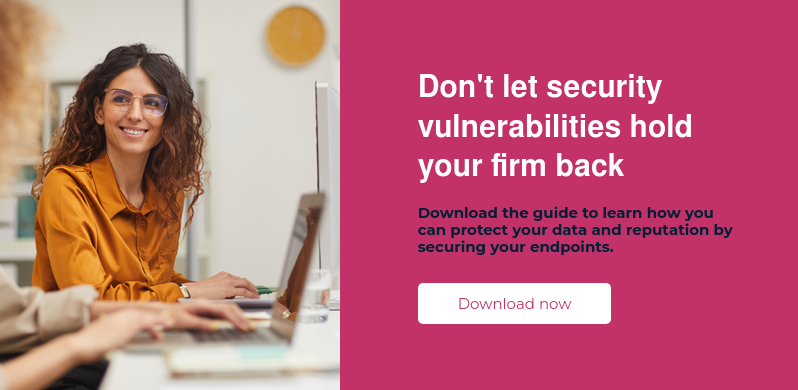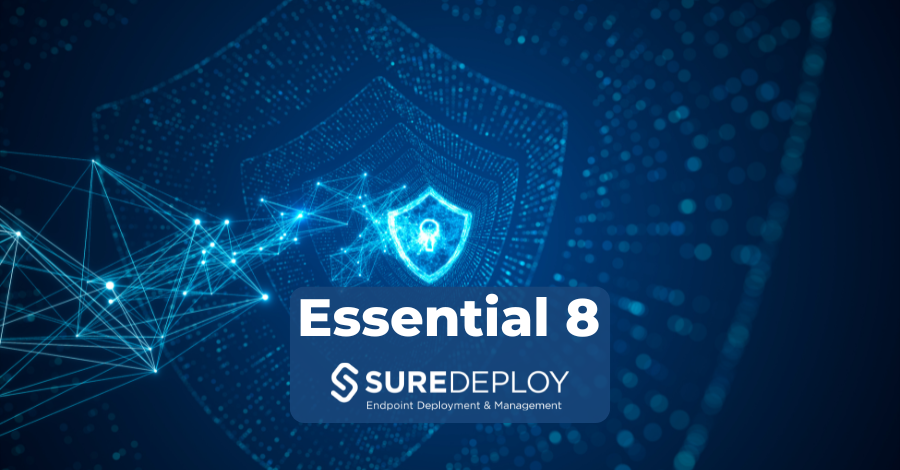3 min read
6 best practices to ensure security and the productivity of employees
 Robert McQuhae
:
08/11/2023
Robert McQuhae
:
08/11/2023

While businesses recognise the advantages of remote work for their employees, unfortunately, cybercriminals do as well. Malicious actors are quickly advancing their ways to launch cyberattacks on organisations and their confidential information, leaving no endpoint device immune. Meanwhile, enhancing employee productivity remains a priority for businesses - especially across a decentralised workforce.
But if balancing the security and productivity of employees is essential for a thriving workplace - how can you do both effectively? In this blog, we'll explore six key best practices for achieving the equilibrium between workplace security and the productivity of employees.
1. Develop a clear security policy
A well-defined security policy forms the foundation for balancing security and productivity. It should outline the security measures, expectations and consequences for non-compliance. So, it’s important to ensure the policy is clear, unambiguous and communicated effectively to all employees and that they understand the importance of adhering to it.
With the rise of remote work, striking a balance between security and productivity has undoubtedly become more challenging. Remote work policies should clearly outline security expectations and guidelines for employees working outside the office. In this climate, it pays for remote staff to have safe access to company resources through secure cloud solutions. Cloud technology can provide secure, scalable and consistent infrastructure that contributes to a reliable and high-performing work environment.
2. Educate employees and build a culture of security
Educating employees about cybersecurity threats and best practices is vital. It’s important to conduct regular training sessions to update them on the latest security threats and how to spot them. Well-informed employees are more likely to make conscious decisions that protect your organisation's security without compromising productivity.
But to have cybersecurity ingrained in your organisation, you should build a security culture by rewarding employees, such as recognising those who report security incidents or potential threats. If you encourage employees to take ownership of security, you can enhance the safety of your business information and boost their commitment to safe practices.
3. Implement access controls and MFA
These controls are designed to limit the access employees have to certain resources or information. Role-based controls ensure that employees only have access to the data and systems they need to perform their jobs. This minimises the risk of data breaches while empowering productivity in their designated roles.
In addition, Multi-Factor Authentication (MFA) provides an extra layer of security by requiring users to enter multiple forms of verification when logging into a system or application. It's a simple yet effective way to enhance security without causing significant disruptions to the productivity of employees.
4. Conduct regular software updates and patch management
Keeping software and systems up-to-date is crucial for security. Outdated software often contains vulnerabilities that hackers can exploit. To avoid this, implement a patch management system to ensure that all devices and software are regularly updated. Plus, if you automate this process you can minimise disruptions to productivity.
Automation also sets the stage for continuous monitoring which allows you to detect and respond to security threats in real time. This means that as soon as a security issue arises, your organisation can react swiftly and effectively, minimising downtime and productivity loss.
5. Use collaboration tools for secure communication
To be engaged and productive even across a distributed workforce, your employees need access to collaboration tools that securely connect them. Whether it be encrypted messaging to protect sensitive information or knowledge sharing to spark innovation, a good collaboration tool minimises the chance of colleagues missing important updates and ensures that everyone is on the same page.
6. Implement secure endpoint device management
Device management is instrumental to striking the right balance between efficiency and data security. Through a centralised approach to managing and safeguarding devices, sensitive staff and client data remains protected. Moreover, secure endpoint management enforces security policies and encryption measures to safeguard information from unauthorised access. And with the ability to remotely monitor and control devices, you can address issues swiftly, even across diverse locations, to minimise downtime and increase the productivity of employees.
Balancing workplace security with the productivity of employees is an ongoing process that requires careful planning, clear communication and a commitment to staying updated on the latest security threats. By implementing these best practices, businesses can create an environment where both security and productivity thrive to ensure long-term success and resilience in an increasingly digital world.
Don't let security vulnerabilities hold your firm back. Download our essential guide to endpoint device management and uncover how to protect your clients, safeguard your reputation and ensure ongoing business success.
Take the complexity out of Microsoft Intune deployments with SureDeploy. Elevate your device management capabilities and enhance your security score.





